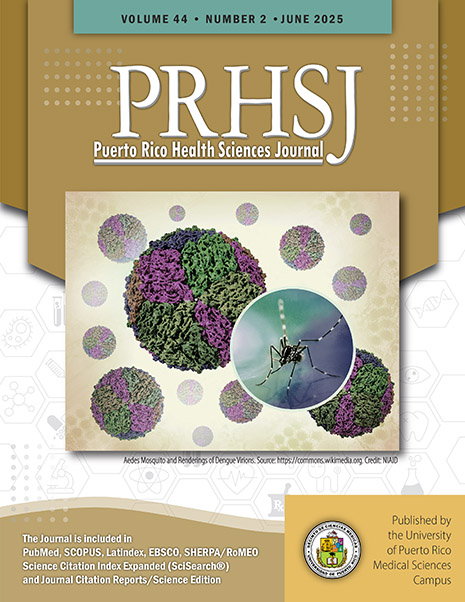Abstract
Objective: Cardiovascular disease (CVD) is the leading cause of death among women in Puerto Rico (PR). Cardiovascular disease risk factors (CVDRF) during pregnancy, such as obesity, type 2 diabetes (T2D), hypertension, and hypertensive disorders of pregnancy, increase risks for maternal and neonatal health. Limited data exist on CVDRF prevalence among pregnant women in PR. Methods: This cross-sectional study analyzed medical records of 264 pregnant women aged 21-35 years with no prior pregnancies from an outpatient clinic in San Juan, PR, during 2018-2019. Key CVDRFs included pre-pregnancy obesity, T2D, gestational diabetes, hypertension, and hypertensive disorders of pregnancy. Age groups (21-25, 26-30, 31-35 years) were assessed for CVDRF prevalence. Logistic and multinomial regressions adjusted for sociodemographic variables were used to evaluate associations. Results: Pre-pregnancy obesity was the most prevalent CVDRF (23.5%). Women aged 31-35 years had significantly higher odds of T2D/ gestational diabetes (OR=4.66; 95% CI=1.18, 18.4) and were more likely to experience two or more CVDRFs (RRR=2.73; 95% CI=1.10, 6.80). Discussion: Findings align with global data showing increased CVDRF prevalence with age among pregnant women. Comparisons with Latino and non-Latino populations reveal shared risks, such as higher rates of gestational diabetes and obesity in older age groups, emphasizing the universal relevance of addressing maternal CVDRFs. Significance: This study highlights the importance of identifying and managing CVDRF among pregnant women in PR, particularly those aged 31-35 years. The findings provide critical data to inform targeted interventions, optimize prenatal care, and reduce long-term maternal and neonatal complications, contributing to improved health outcomes for Puerto Rican women.
Authors who publish with this journal agree to the following terms:
a. Authors retain copyright and grant the journal right of first publication with the work simultaneously licensed under a Creative Commons Attribution License that allows others to share the work with an acknowledgement of the work's authorship and initial publication in this journal.
b. Authors are able to enter into separate, additional contractual arrangements for the non-exclusive distribution of the journal's published version of the work (e.g., post it to an institutional repository or publish it in a book), with an acknowledgement of its initial publication in this journal.
c. Authors are permitted and encouraged to post their work online (e.g., in institutional repositories or on their website) prior to and during the submission process, as it can lead to productive exchanges, as well as earlier and greater citation of published work (See The Effect of Open Access).
